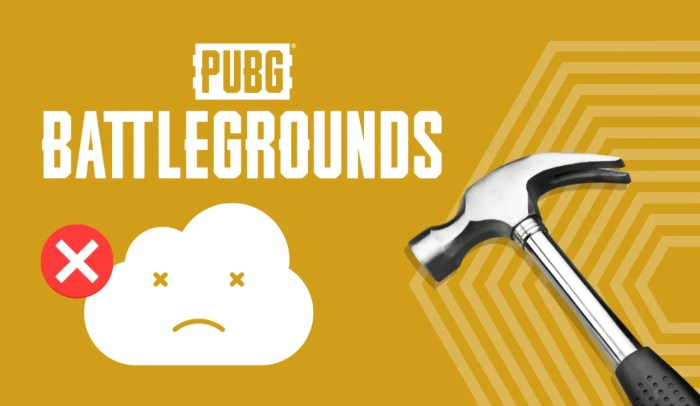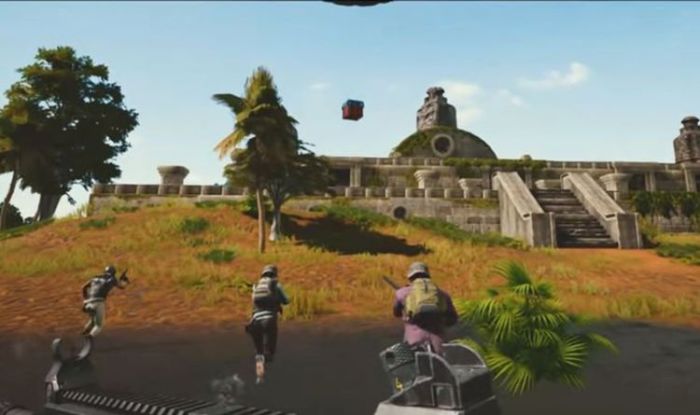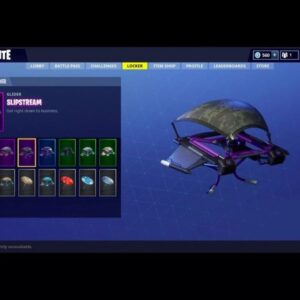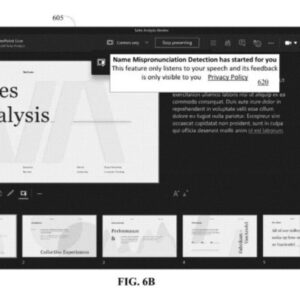PUBG region locking being tested is shaking up the battle royale world! Imagine a future where lag is a distant memory, and every chicken dinner feels truly earned. But this seemingly simple tweak has far-reaching consequences, impacting everything from player connections to the game’s overall business model. We dive deep into the potential upsides and downsides, exploring the technical hurdles and the strategic implications for PUBG Mobile’s future.
From analyzing current regional disparities in ping, player skill, and even event availability, to examining the potential for improved fairness and monetization strategies, we unpack the complex layers of this significant development. We’ll also explore the challenges of implementing region locking, including the tricky business of circumventing VPNs and ensuring a fair and balanced gaming experience for all.
PUBG Region Locking
The world of PUBG Mobile isn’t a single, unified battlefield. Instead, it’s a complex patchwork of regional servers, each with its own unique characteristics and player base. Recent testing of region locking highlights the ongoing efforts to manage this fragmented landscape, aiming for a more balanced and enjoyable experience for players worldwide. This exploration delves into the current state of regional restrictions, comparing server experiences across the globe.
PUBG Mobile Regional Restrictions: A Global Overview
PUBG Mobile’s regional restrictions are designed to minimize latency and improve matchmaking. Players are generally assigned to servers geographically closest to their location. However, the specifics vary based on the game’s version and the player’s device. Some regions are more strictly enforced than others, with limitations on accessing servers outside designated areas. This often leads to a complex, sometimes frustrating, experience for players who wish to connect with friends in different regions or explore alternative servers. The level of restriction also influences the player experience, impacting aspects like matchmaking times and overall game stability.
Server Regions and Player Bases: A Diverse Landscape
The global PUBG Mobile player base is spread across numerous servers. Major regions include North America, Europe, Asia (further subdivided into numerous countries/regions), South America, and Oceania. Estimating the exact player base size for each region is difficult, as official numbers are rarely released. However, we can infer relative sizes based on in-game observations and third-party reports. For instance, the Asian server generally boasts the largest player base, followed by North America and Europe. The relative size of each region’s player base influences matchmaking times, server stability, and the overall competitive landscape.
Comparing In-Game Experiences Across Regions
The in-game experience in PUBG Mobile varies significantly across different regions. Latency, a crucial factor affecting gameplay smoothness, is heavily influenced by geographical distance from the server. Players in regions with dedicated servers typically experience lower ping (latency), resulting in smoother gameplay. Conversely, players connecting to distant servers often encounter high ping, leading to lag and decreased responsiveness. Furthermore, player skill levels can vary across regions, with some servers exhibiting higher levels of competition than others. Finally, the availability of in-game events and features can also differ based on regional regulations and marketing strategies.
Regional Server Comparison Table
| Region | Player Base Size (Estimate) | Average Ping (ms) | Notable Features |
|---|---|---|---|
| Asia | Very Large | Varies greatly; can be low to high depending on location and server | Highly competitive; frequent events; diverse player base |
| North America | Large | Generally low to moderate | Strong community; consistent server performance; regular updates |
| Europe | Large | Generally low to moderate | Similar to North America in terms of community and server stability |
| South America | Medium | Can be high depending on location and internet infrastructure | Growing player base; may experience higher latency |
| Oceania | Small | Can be high due to geographical location | May experience longer matchmaking times due to smaller player base |
Impact of Region Locking on Players: Pubg Region Locking Being Tested

Source: futurecdn.net
Region locking in online games like PUBG is a double-edged sword. While it aims to improve the overall player experience, its implementation inevitably impacts players in both positive and negative ways. The core argument revolves around balancing server optimization with the social aspect of online gaming, a delicate act that requires careful consideration.
The primary goal of region locking is to enhance the gaming experience by minimizing latency issues. This directly translates to smoother gameplay and a more competitive environment. However, this improvement comes at a cost, often impacting the social connections players have built within the game.
Advantages of Region Locking for Players
Reduced ping and lag are the most significant advantages. Imagine the frustration of constantly experiencing rubber-banding or delayed actions in a fast-paced battle royale. Region locking minimizes this by connecting players to servers geographically closer to them. This leads to fairer gameplay, as everyone experiences a similar level of responsiveness, reducing the advantage held by players with lower ping. The overall competitive balance improves, creating a more satisfying experience for everyone involved.
Disadvantages of Region Locking for Players
The primary drawback is the limitation on player interaction. Region locking can sever connections with friends and teammates who reside in different regions. Imagine a group of friends who have played together for years, suddenly unable to queue together due to regional restrictions. This social fragmentation is a significant downside. Furthermore, some players might face restricted access to certain in-game content or events that are region-specific. This creates an uneven playing field in terms of access to exclusive items or opportunities.
Examples of Player Experiences
A positive experience could be described as a player consistently experiencing smooth, lag-free gameplay after their region was locked. They can now participate in competitive matches without the frustrating lag that previously hindered their performance. This player might report feeling more competitive and engaged with the game.
A negative experience might involve a player unable to play with their long-time friends from another country. The inability to maintain established social connections within the game can lead to frustration and potentially cause them to abandon the game entirely. The loss of this social aspect can significantly diminish the overall enjoyment of the game.
Potential Solutions to Mitigate the Disadvantages of Region Locking
The introduction of region-spanning servers or cross-region play options could mitigate some of the drawbacks. This could allow players to connect with friends from other regions, even if it means slightly increased ping for some players. Another solution is the implementation of flexible region settings, allowing players to choose their preferred region with a clear understanding of the potential ping implications. Finally, developers could explore region-specific events and content to create a sense of community within each region, lessening the impact of the limitations on cross-region interaction.
Technical Aspects of Region Locking

Source: gamechampions.com
PUBG’s region locking tests are sparking debate; it’s all about server stability, but also hints at a broader trend. Think about how this mirrors Facebook’s global expansion of its local news focus, as detailed in this insightful article facebooks local news focus expanded globally , highlighting the increasing importance of localized content delivery. Ultimately, PUBG’s move might be less about gaming and more about managing a massive, geographically dispersed player base.
Implementing region locking in a massively multiplayer online game like PUBG presents a complex technical challenge, demanding a robust and adaptable system capable of handling millions of concurrent players spread across the globe. The core difficulty lies in accurately identifying a player’s location while simultaneously preventing circumvention through various methods employed by players. This requires a multi-layered approach encompassing various technologies and strategies.
Region determination isn’t a simple process. It involves a combination of techniques, each with its own limitations and vulnerabilities. The accuracy and reliability of these methods directly impact the effectiveness of the region lock.
Methods for Determining Player Region
Several methods are commonly employed to determine a player’s region. The most straightforward is using the player’s IP address. However, this is far from foolproof due to the use of VPNs and proxies. IP addresses are assigned to internet service providers (ISPs), and while generally tied to a geographic location, this isn’t always precise. Furthermore, dynamic IP addresses can change frequently, adding another layer of complexity. Another method involves using the account’s location settings, where players manually input their location during account creation or profile setup. This method is susceptible to manipulation, as players can easily enter a false location. A more sophisticated approach might involve combining IP address data with account location settings, creating a weighted average to improve accuracy. Finally, analyzing network latency to various servers can provide further hints about a player’s location.
Improving Region Detection: A Hypothetical System
A more robust system could incorporate machine learning algorithms to analyze multiple data points simultaneously. This system would weigh the evidence from different sources, such as IP address, account location, network latency, and even device information (like language settings). The algorithm would learn to identify patterns indicative of VPN usage or inaccurate location data, allowing for a more accurate and reliable determination of a player’s true region. For example, if a player’s IP address suggests a location in the United States, but their account settings indicate they are in South Korea, and their network latency is consistently low to servers in the United States, the algorithm would flag this as potentially fraudulent.
Preventing Circumvention of Region Locks
Circumventing region locks is a constant cat-and-mouse game. Players frequently employ VPNs and proxies to mask their true IP address. One approach to mitigate this is implementing more sophisticated IP address verification techniques, such as analyzing the characteristics of the connection beyond just the IP address itself. This could involve examining network routing information or analyzing traffic patterns. Another strategy is implementing account verification measures, such as requiring players to verify their location through a secondary method, like phone number verification or postal address confirmation. Regularly updating the region lock system with the latest techniques to detect and block VPNs and proxies is also critical. This ongoing adaptation is essential to maintain the integrity of the region lock. Finally, leveraging behavioral analysis can help identify suspicious activity indicative of VPN usage, such as players frequently switching IP addresses or exhibiting unusual network behavior.
The Business Implications of Region Locking
Region locking in PUBG Mobile presents a complex business equation, balancing potential gains with significant risks. While it offers avenues for improved player experience and refined monetization strategies, it also carries the potential for alienating players and creating logistical hurdles. The ultimate success hinges on how Tencent, the game’s developer, navigates these challenges.
The primary business goal is, of course, profit maximization. Region locking offers several potential pathways to achieve this, but also introduces new obstacles.
Improved Player Experience and Monetization Strategies
Region locking allows developers to tailor the in-game experience to specific regional preferences. This could involve adjusting the game’s content, such as adding region-specific events, skins, and collaborations. Imagine a PUBG Mobile event celebrating a popular festival in India, or a collaboration with a regionally beloved brand in Brazil. This localized approach could enhance player engagement and satisfaction, leading to increased spending on in-game items. Furthermore, region-specific pricing strategies become possible, allowing the developers to adapt to varying economic conditions and purchasing power across different regions. For instance, they could offer lower prices in regions with lower average incomes, making the game more accessible while still generating revenue.
Potential Drawbacks for Developers
A major concern is the potential loss of players. Restricting access based on region could alienate players who previously enjoyed cross-regional interactions and competition. The resulting decrease in the overall player base could negatively impact the game’s popularity and long-term viability. Moreover, managing multiple versions of the game, each tailored to a specific region, presents significant technical and logistical challenges. This increased complexity can lead to higher development and maintenance costs, potentially offsetting any gains from improved monetization. Furthermore, market segmentation can create difficulties in coordinating updates and content releases across different regions. Inconsistencies in the player experience could lead to dissatisfaction and a decline in player retention.
Comparison of Business Models Across Regions
PUBG Mobile’s business model already varies across regions, reflecting differences in player demographics, economic conditions, and regulatory environments. In some regions, the game may rely more heavily on in-app purchases of cosmetic items, while in others, partnerships and brand collaborations might play a larger role. Region locking could exacerbate these existing differences, leading to even greater divergence in the game’s monetization strategies. For example, a region with a strong preference for battle passes might see a greater emphasis on that revenue stream, while another region might see more focus on direct sales of in-game items.
Potential Long-Term Effects of Region Locking, Pubg region locking being tested
The long-term impact of region locking on PUBG Mobile’s success is uncertain, but several potential outcomes are worth considering:
- Increased revenue in some regions due to targeted monetization strategies.
- Decreased revenue in other regions due to player loss and market segmentation challenges.
- Improved player engagement and satisfaction in regions with localized content.
- Increased development and maintenance costs due to managing multiple versions of the game.
- Potential for new regional communities and competitive scenes to emerge.
- Increased difficulty in coordinating updates and content releases across regions.
Testing and Future Implications of Region Locking

Source: co.uk
The implementation of region locking in PUBG is a complex undertaking, requiring rigorous testing to minimize disruption and maximize benefits. A phased approach, focusing on iterative improvements based on data analysis, is crucial for a smooth rollout. This ensures that any unforeseen issues are identified and addressed before a full-scale deployment.
The testing process will involve a series of carefully planned stages, each designed to evaluate specific aspects of the system’s performance and impact. Metrics will be closely monitored to gauge the success of each phase, allowing for adjustments and refinements along the way. The ultimate goal is to create a system that effectively reduces cheating while maintaining a positive player experience.
Phases of the Region Locking Testing Process
The testing process will likely unfold in three distinct phases: Alpha, Beta, and a final Pre-Release phase. Each phase will have specific goals and metrics to track. This tiered approach allows for controlled expansion of the testing population, minimizing potential widespread negative impacts.
The Alpha phase will involve a small, select group of internal testers and possibly a limited number of trusted community members. This phase focuses on identifying critical bugs and stability issues. The Beta phase will expand the testing pool to a larger, more diverse group of players, allowing for more comprehensive testing and feedback collection across different regions and network conditions. The Pre-Release phase will be a final, wider beta test before the official launch, allowing for a final round of bug fixes and system optimization based on the broader feedback gathered.
Metrics for Measuring Test Success
Several key metrics will be used to assess the effectiveness of region locking. These metrics are designed to provide a comprehensive picture of the system’s performance and impact on the player base.
These metrics will include: Cheating rates (measured by a reduction in reported cheats and bans); Player latency (average ping times within and across regions); Player satisfaction (measured through surveys and in-game feedback); Server stability (uptime and error rates); and Matchmaking times (average queue times for players).
Potential Areas for Improvement
Based on the testing results, several areas might require improvement. For instance, if player latency increases significantly in certain regions, adjustments to server infrastructure or matchmaking algorithms may be necessary. Similarly, if player satisfaction scores are low due to increased matchmaking times or other issues, system adjustments would be required. A decline in reported cheating rates will be a key indicator of success.
Analyzing the data gathered from each phase will allow developers to pinpoint areas needing further optimization. This might include refining the region detection algorithms, improving server capacity in high-demand regions, or adjusting matchmaking parameters to minimize latency and improve player experience.
Hypothetical Timeline for Full Implementation
Assuming successful testing, a plausible timeline for the full implementation of region locking could look like this:
Phase 1 (Alpha): 3 months – focused on internal testing and bug fixing.
Phase 2 (Beta): 2 months – focused on wider testing and feedback collection.
Phase 3 (Pre-Release): 1 month – final testing and optimization based on beta feedback.
Full Launch: Following the successful completion of the Pre-Release phase, a global rollout could occur within a month.
This timeline is, of course, a hypothetical example. The actual timeline may vary depending on the results of the testing phases and any unforeseen challenges that may arise.
Ultimate Conclusion
The testing of PUBG region locking represents a pivotal moment for the game. While the promise of reduced lag and fairer gameplay is enticing, the potential drawbacks—like restricted friendships and limited content access—need careful consideration. Ultimately, the success of this initiative hinges on a balanced approach that prioritizes both player satisfaction and the long-term health of the game. Only time will tell if this bold move pays off, but one thing’s for sure: the battle royale landscape is about to get a whole lot more interesting.


